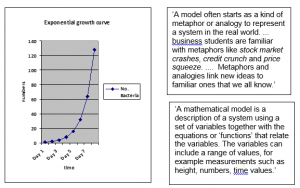
English language entry requirements such as TOEFL or IELTS do not prepare students for the rich and complex world of international higher education: that is the work of the EAP classroom. The most difficult task that EAP learners and teachers face is to transfer learning from the classroom to current and future academic studies. Access EAP: Frameworks prepares learners for the real challenges of university study by developing scholarship.

Scholarship involves a new set of behaviours, determined by the culture and values of the academic community. It is developed through critical thinking and independent learning activities. On a pre-sessional course, students may not be getting a consistent and coherent understanding of these behaviours. If the ideas are not embedded in a syllabus, different teachers may present different understandings, and learning is incoherent if the underlying purpose of the activities is not clear to students. Access EAP: Frameworks uses graduate attributes[1] to provide an explicit framework of scholarship which is shared by English medium universities globally.
Input is driven by concepts, not topics. Unlike topically based texts, an explicitly conceptual input demands academic contexts and triggers academic language, enabling students to produce academic genres.
The syllabus is designed around academic competences not study skills. These are derived from graduate attributes. For example, students learn:
The book provides a procedural framework of tasks and activities which develop graduate attributes through three phases:
A worked example from the book using a lecture on mathematical modelling and associated tasks shows this framework in action.
Graduate attribute: understand how knowledge is created in a discipline, and how students need to engage with this, e.g. through discussion and research
1. Information

2. Analysis
The lecturer thinks that business students are likely to know the metaphors stock market crashes, credit crunch and price
Do these metaphors refer to positive or negative events?
Think of examples of how the exponential growth in computer memory has impacted on products that we buy today compared with products ten or twenty years ago.
3. Self-alignment
Do researchers measure anything in your subject discipline? Give examples of these key variables.
The settings used in the book ensure students explore authentic academic contexts.

Drawing on the participatory model of language learning[2] and situated learning[3], tasks lead learners consistently beyond language and skills acquisition towards performance in authentic university contexts. Readers are supported to imagine themselves as apprentice participants in their target community of practice. Exemplar students are shown as peers performing – sometimes successfully and sometimes not – in university scenarios such as reflecting on grades with a mentor, finding and evaluating sources in the library, arguing from data, negotiating with gatekeepers and addressing a student committee. Learners reflect critically on the choices of language and behaviour made in each setting and then decide for themselves what they will do in their own studies.
The teacher’s book was prepared by the authors Sue and Olwyn as they wrote the student material and using their experience in EAP teacher development. They aim to give a clear rationale for aims and tasks and provide explanations and examples of the performance required in specific academic situations. These notes serve as a comprehensive introduction to the approach, particularly for teachers with limited access to university contexts.
Amongst the academic reading texts used are extracts from Wallace, M. and Wray, A. 2011 Critical Reading and Writing for Postgraduates. London: Sage (second edition). On seeing the finished course book Wallace commented, ‘a lot of careful thought has clearly gone into the incremental progression of ideas and practice activities throughout the text. I’m learning a lot from your ideas’.
[1] Sfard, A. (1998) On two metaphors for learning and the dangers of choosing just one. Educational Researcher, 27
[2] Nicol, D. The foundation for graduate attributes: developing self-regulation through self and peer-assessment. QAA Enhancement themes 2010. Accessed 29.10.11 link
[3] Lave, J. and Wenger, E. (1991) Situated Learning. Legitimate peripheral participation. Cambridge: University of Cambridge Press